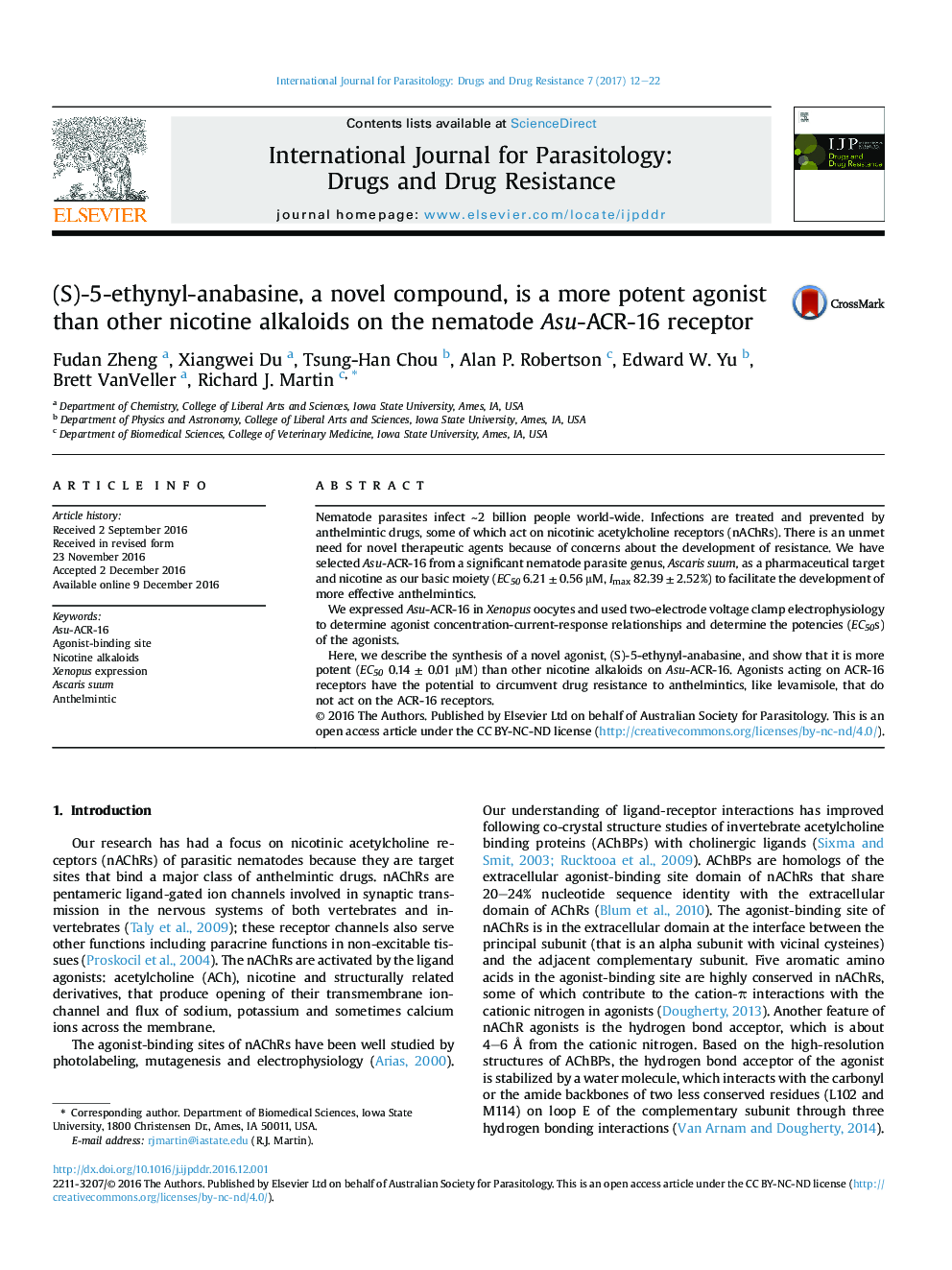| Article ID | Journal | Published Year | Pages | File Type |
|---|---|---|---|---|
| 5517873 | International Journal for Parasitology: Drugs and Drug Resistance | 2017 | 11 Pages |
â¢ACR-16 receptor agonists may overcome resistance to anthelmintics like levamisole.â¢We modeled the Asu-ACR-16 of Ascaris as a target for novel anthelmintic development.â¢We synthesized novel nicotinic agonists including (S)-5-ethynyl-anabasine.â¢We expressed Asu-ACR-16 in Xenopus oocytes to determine agonists potencies.â¢(S)-5-ethynyl-anabasine is more potent (EC50 0.1 μM) than other nicotinic alkaloids.
Nematode parasites infect â¼2 billion people world-wide. Infections are treated and prevented by anthelmintic drugs, some of which act on nicotinic acetylcholine receptors (nAChRs). There is an unmet need for novel therapeutic agents because of concerns about the development of resistance. We have selected Asu-ACR-16 from a significant nematode parasite genus, Ascaris suum, as a pharmaceutical target and nicotine as our basic moiety (EC50 6.21 ± 0.56 μM, Imax 82.39 ± 2.52%) to facilitate the development of more effective anthelmintics.We expressed Asu-ACR-16 in Xenopus oocytes and used two-electrode voltage clamp electrophysiology to determine agonist concentration-current-response relationships and determine the potencies (EC50s) of the agonists.Here, we describe the synthesis of a novel agonist, (S)-5-ethynyl-anabasine, and show that it is more potent (EC50 0.14 ± 0.01 μM) than other nicotine alkaloids on Asu-ACR-16. Agonists acting on ACR-16 receptors have the potential to circumvent drug resistance to anthelmintics, like levamisole, that do not act on the ACR-16 receptors.
Graphical abstractDownload high-res image (102KB)Download full-size image
